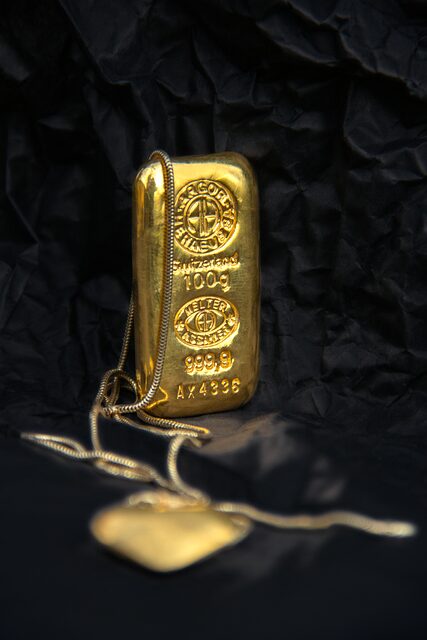Precious metals IRAs offer investors the opportunity to include physical gold, silver, platinum, and palladium within their retirement savings plans, with IRS regulations mandating specific purity levels for eligible investments. Gold is often chosen for its preservation capabilities, while silver can provide market growth potential. Investors must select their preferred metal type and form based on their investment goals and risk tolerance, and work with a custodian experienced in precious metals IRAs to ensure compliance and secure storage. When choosing a company to handle a precious metals IRA, it's important to consider the variety of metals offered, regulatory compliance, transaction costs, storage solutions, customer service quality, historical performance, and client feedback. A careful evaluation of these factors will help investors align their choice with their retirement objectives and risk profiles, ensuring they select a provider with a reputation for integrity and professionalism. The process of transferring funds into a precious metals IRA involves rolling over from an existing retirement account and selecting a custodian to handle the purchase and storage of IRS-approved precious metals, which serve as a hedge against inflation and market instability within a diversified investment strategy.
Investing in a Precious Metals IRA can serve as a strategic financial diversification tool, offering a hedge against inflation and market volatility. This article delves into the intricacies of incorporating tangible assets like gold, silver, platinum, and palladium into your retirement portfolio through specialized IRA accounts. We will explore the various options available, evaluate leading precious metals IRA companies, outline the rollover process, detail the permitted types of precious metals, and discuss strategic considerations for investors. Enhance your financial security with a golden edge in retirement planning.
- Understanding Precious Metals IRA Options
- Evaluating Top Precious Metals IRA Companies
- The Process of Rolling Over to a Precious Metals IRA
- Types of Precious Metals Allowed in an IRA
- Strategic Considerations for Investing in Precious Metals via I
Understanding Precious Metals IRA Options

Precious metals IRAs offer investors a unique avenue to diversify their retirement portfolios with tangible assets that have historically retained value. These accounts allow for the inclusion of physical gold, silver, platinum, and palladium as part of one’s retirement savings. When considering a precious metals IRA, it’s crucial to understand the types of precious metals eligible for investment within these accounts, as regulated by the Internal Revenue Service (IRS). Gold and silver are often favored due to their long-standing role as safe-haven assets. Each type of metal offers distinct benefits; gold is known for its preservation of wealth, while silver tends to be more reactive to market fluctuations, potentially offering greater short-term growth opportunities.
Investors should also familiarize themselves with the different forms these metals can take within an IRA, such as coins, bars, and bullion. The IRS mandates that these metals meet certain purity standards—for instance, gold must be 99.5% pure or higher, while silver needs to be 99.9% pure. Additionally, the selection process for the type of precious metal and its form should align with personal investment goals and risk tolerance. It’s also important to select a reputable custodian that specializes in precious metals IRAs to ensure compliance with IRS regulations and to manage the secure storage of these assets. Understanding the intricacies of setting up and managing a precious metals IRA is key to leveraging these investments as part of a well-rounded retirement strategy.
Evaluating Top Precious Metals IRA Companies

When considering the incorporation of physical precious metals into an Individual Retirement Account (IRA), evaluating top precious metals IRA companies is a pivotal step. Investors must scrutinize various factors to ascertain the most reputable and reliable service providers in this niche. Key aspects include the range of precious metals offered, the company’s standing with regulatory bodies like the Bureau of Consumer Financial Protection (BCFP) and the Internal Revenue Service (IRS), their transaction fees, storage options, customer support quality, and historical performance in facilitating such investments. It’s imperative to review client testimonials and independent reviews to gauge customer satisfaction and service consistency. Additionally, one should examine the company’s expertise in navigating the complex rules governing IRA investments, particularly those pertaining to self-directed IRAs. This due diligence ensures that investors make informed decisions aligned with their retirement goals and risk tolerance. Transparency in their processes and a commitment to compliance are also critical indicators of a trustworthy precious metals IRA company. Investors should prioritize companies that demonstrate a steadfast dedication to maintaining high standards of integrity and professionalism throughout the investment process.
The Process of Rolling Over to a Precious Metals IRA

Rollovering to a Precious Metals IRA is a strategic financial move that allows individuals to diversify their retirement portfolios with tangible assets. This process typically involves transferring funds from an existing retirement account, such as a traditional or Roth IRA, or a 401(k) plan, into a self-directed IRA that permits the investment in precious metals. The first step is to choose a custodian specialized in Precious Metals IRAs, as these firms are equipped to handle the specific regulations governing such investments. Once an account with a reputable custodian is established, investors can initiate a rollover by requesting a direct transfer from their current IRA custodian or by having the funds distributed to them, which they then deposit into their new Precious Metals IRA within a stipulated timeframe to avoid tax implications. It’s crucial to adhere to IRS rules throughout this process, such as the 60-day rule for rollovers involving direct distributions to individuals. The custodian will then purchase the approved precious metals on behalf of the investor, ensuring that the assets meet the IRS’s purity standards and are stored in a manner compliant with IRS regulations, often in an IRS-approved depository. This transition enables investors to safeguard their retirement savings against inflation and market volatility by including physical precious metals as part of their diversified investment strategy.
Types of Precious Metals Allowed in an IRA

When considering the inclusion of precious metals in an Individual Retirement Account (IRA), it’s crucial to understand the types of metals that the IRS permits. Among the approved precious metals are gold, silver, platinum, and palladium in their respective pure forms or as alloys. For gold, coins like American Gold Eagles and Canadian Gold Maple Leafs, as well as gold bars that meet certain fineness requirements, are allowable. Silver is similarly accepted in the form of coins like the American Silver Eagle and the Canadian Silver Maple Leaf, as well as silver bars adhering to specific purity levels. Platinum and palladium have their own set of approved products, such as the Australian Platinum Kangaroo and the Canadian Palladium Maple Leaf, along with their respective bars that must meet fineness standards. Investors should ensure that these metals are held by a trustee in a legitimate IRA structure that complies with IRS regulations, thereby safeguarding the tax-advantaged status of their retirement savings. It’s also worth noting that the Internal Revenue Service (IRS) provides specific guidelines on purity and storage for these metals to maintain eligibility within an IRA.
Strategic Considerations for Investing in Precious Metals via I

When considering the incorporation of precious metals into an Individual Retirement Account (IRA), investors should weigh several strategic factors to optimize their retirement portfolio’s performance and risk management. Gold, silver, platinum, and palladium have historically served as hedges against inflation and economic instability. Their value often remains stable or increases when traditional investment markets face turbulence. Investors must understand the role of these metals within a diversified portfolio, as they can provide a counterbalance to paper assets.
Before committing to a precious metals IRA, it is crucial to select a reputable custodian and dealer with expertise in this niche market. These entities will guide investors through the process of acquiring eligible precious metals, adhering to IRS regulations that dictate what types of bullion and coins can be held within a self-directed IRA. Additionally, investors should consider storage options for their physical holdings, as some providers offer fully insured, segregated storage, while others may require investors to store metals at approved depositories. Attention to the details of transaction fees, storage costs, and the liquidity of the precious metals market are also prudent steps in making informed investment decisions within this retirement savings vehicle.
Investing in precious metals through an Individual Retirement Account (IRA) offers a diversified and historically resilient strategy for securing retirement savings. By choosing from a variety of reputable precious metals IRA companies, investors can seamlessly integrate physical gold, silver, platinum, and palladium into their retirement portfolios. The process, detailed in this article, involves careful evaluation of the IRA providers, understanding the types of precious metals permissible within an IRA, and strategic considerations to align with personal investment goals. As you consider this alternative investment avenue, it’s clear that the integration of physical precious metals can be a prudent addition to your retirement strategy, providing both stability and potential growth.
